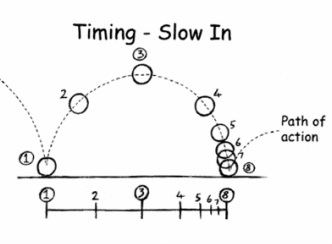Tuesday, May 26, 2020
My favorite part of class this year was being able to learn how to Animate a lot better than i used to do. I've learned the most about Animation and texturing things to make them look the most realistic possible. I really didn't hate anything that we did in class at all. I didn't like that i was always behind people on their projects but that's probably because I have OCD and I needed everything to look perfect. Other than that, class was great and I can't wait for class with you next year!
Thursday, May 21, 2020
To start out an animation, you must first brainstorm your ideas and begin to lay out the whole project, create your story board and then the costumes and backgrounds/locations are determined. Then you must create your character models and then make animatics. To then start getting everything in action, you start modelling characters to have a 3D view. Then it's time to give everything custom textures to make the objects and characters unique and make them POP! Then comes lighting the scene. Without doing this, you wouldn't be able to see characters, buildings, skies, etc. Then comes rigging this is done so the character models move. Then finally, you animate. After all is done, sounds must be edited in and picture of the "movie" must be edited to make it look the best quality possible.
I would personally want to be a part of the Modelling role.
I want to learn more of how lighting and textures can be done the very best.
https://conceptartempire.com/what-is-3d-modeling/
I would personally want to be a part of the Modelling role.
I want to learn more of how lighting and textures can be done the very best.
https://conceptartempire.com/what-is-3d-modeling/
Saturday, May 16, 2020
1.) Squash and stretch- Change of Shape. 
2.) Anticipation- Prep for an action
3.) Staging- Mistakenly clear idea.
.
4.) Straight ahead action and Pose to Pose- Creating key poses for characters.
5.) Follow through and overlapping action- *cannot find results
6.) Slow in and Slow out- Timing of and object at the start or end of a sequence.
7.) Arc- Represents the values of an objects parameters.
8.) Secondary Action- An action that results from another action.
9.) Timing- Duration of an action.
10.) Exaggeration- pushes the movement further.
11.) Solid Drawing- Makes a drawing look 3D.
12.) Appeal- when the character or object has Charisma.
2.) Anticipation- Prep for an action
3.) Staging- Mistakenly clear idea.
.
4.) Straight ahead action and Pose to Pose- Creating key poses for characters.
5.) Follow through and overlapping action- *cannot find results
6.) Slow in and Slow out- Timing of and object at the start or end of a sequence.

7.) Arc- Represents the values of an objects parameters.
8.) Secondary Action- An action that results from another action.
9.) Timing- Duration of an action.
10.) Exaggeration- pushes the movement further.
11.) Solid Drawing- Makes a drawing look 3D.
12.) Appeal- when the character or object has Charisma.
Sunday, May 3, 2020
Subscribe to:
Comments (Atom)
